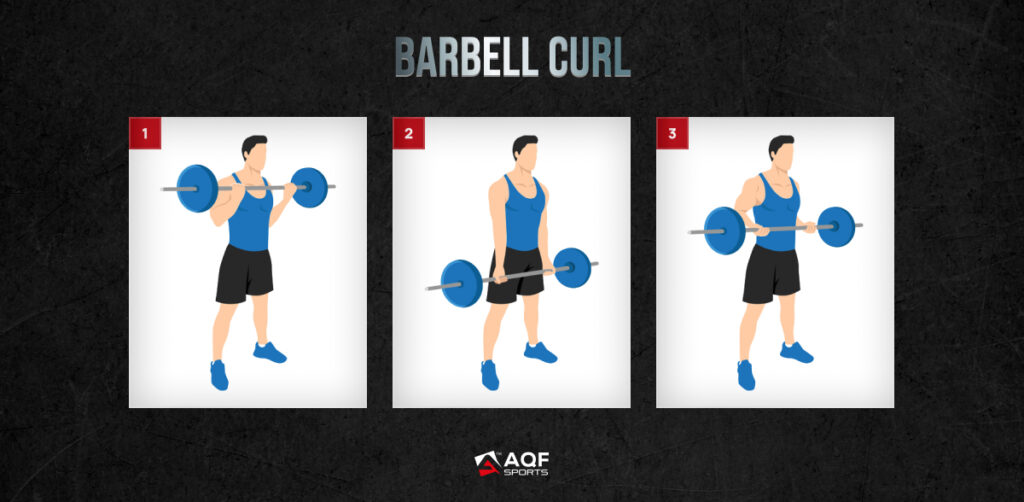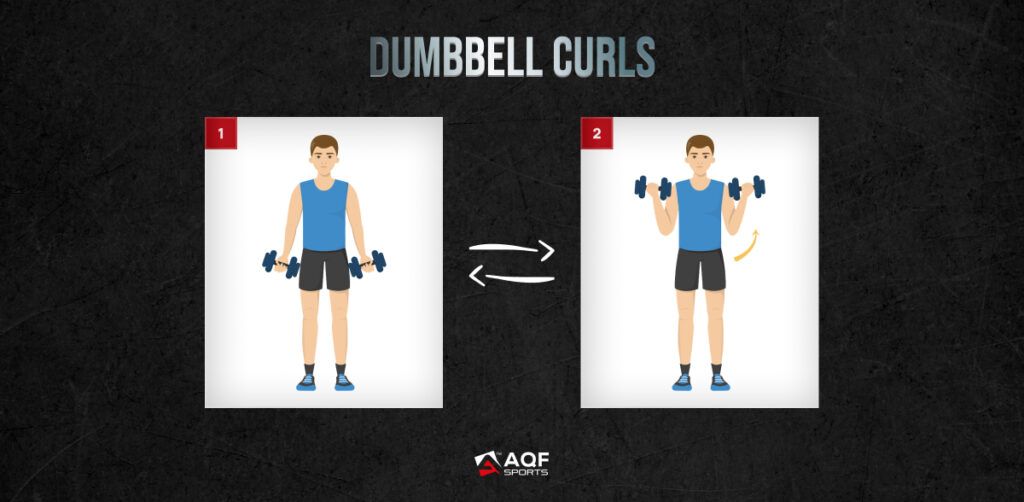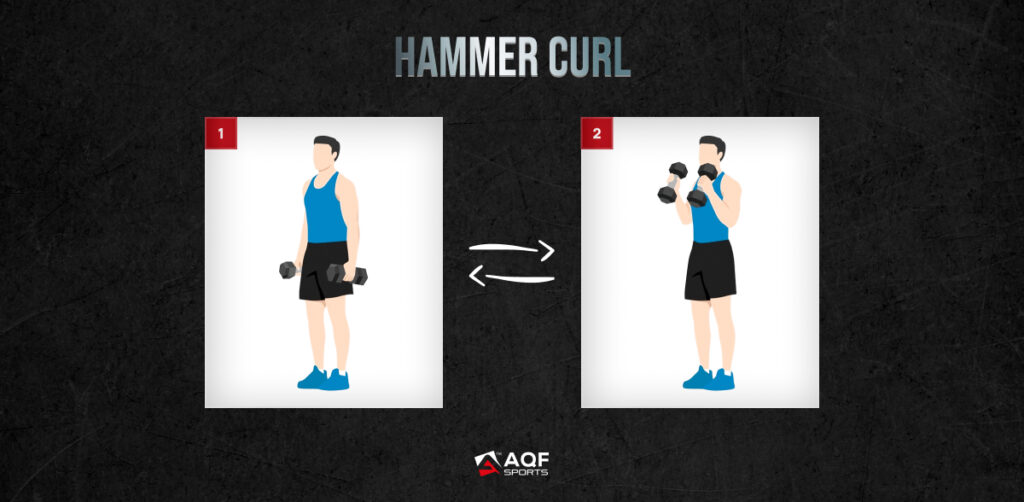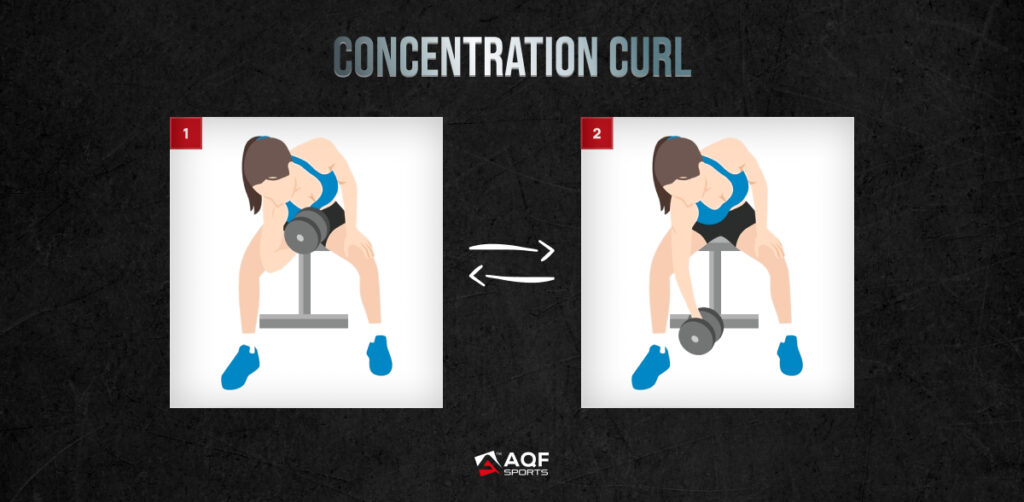Bulking Bicep Workout And Meal Recommendations

Are you ready to sculpt strong and impressive biceps that turn heads wherever you go? If want to build biceps like popular action heroes, you’ve come to the right place. We will equip you with knowledge and bulking bicep techniques you need to effectively build your biceps and achieve the muscular arms you’ve always wanted.
Building biceps requires more than just lifting weights. It’s about understanding the fundamental principles that drive muscle growth in this particular area. You can maximize your results and unleash the true potential of your biceps by focusing on the right exercises, training strategies, and nutrition.
The Mechanism Bulking Bicep
Bicep bulking occurs through a process called hypertrophy. When muscle fibers increase in size, they muscle grows in size. Resistance training, specifically progressive muscle overload training, stimulates hypertrophy. During resistance exercises, such as bicep curls, the muscle fibers in the biceps undergo micro-tears. As the body repairs these micro-tears, it strengthens and enlarges the muscle fibers, resulting in bicep bulking.
Bicep Bulking Target Muscles:
Biceps Brachii is the primary muscle involved in bicep bulking. It consists of two heads: the long head and the short head. Although both heads contribute to overall bicep development, the long head plays a significant role in bicep bulking and shaping the biceps.
Biceps Brachi long heads are located on the outer portion of the upper arm. These heads give biceps a distinct appearance. Exercises such as incline dumbbell curls and hammer curls which involve pulling movements stimulate the long bicep brachii heads growth.
Best Bicep Bulking Exercises
Barbell Curl:

- Stand up straight with your feet shoulder-width apart, holding a barbell with an underhand grip.
- Keep your elbows close to your body and your upper arms stationary.
- Exhale and curl the weight up toward your chest, contracting your biceps.
- Pause briefly at the top, then inhale and slowly lower the barbell back to the starting position.
Dumbbell Curls:

- Stand up straight with a dumbbell in each hand, palms facing forward, and arms fully extended by your sides.
- Keep your elbows close to your body throughout the exercise.
- Exhale and curl one dumbbell up towards your shoulder, rotating your forearm so that your palm faces your shoulder.
- Pause briefly at the top, squeeze your biceps, then inhale and slowly lower the dumbbell back to the starting position.
- Repeat the same process with the other arm.
Incline Dumbbell Curl:

- Set an adjustable bench at a 45-degree incline.
- Sit back on the bench with a dumbbell in each hand, palms facing forward.
- Rest your upper arms on the bench, allowing your elbows to hang off the edge.
- Exhale and curl the dumbbells up towards your shoulders, maintaining strict form.
- Pause briefly at the top, then inhale and slowly lower the dumbbells back to the starting position.
Hammer Curl:

- Stand up straight with a dumbbell in each hand, palms facing your body.
- Keep your elbows close to your body throughout the exercise.
- Exhale and curl the dumbbells up towards your shoulders, maintaining the neutral grip (palms facing your body).
- Pause briefly at the top, then inhale and slowly lower the dumbbells back to the starting position.
Cable Curls:

- Attach a straight bar or rope attachment to a low pulley on a cable machine.
- Stand facing the machine with your feet shoulder-width apart, knees slightly bent.
- Grab the bar or rope with an underhand grip, palms facing up.
- Exhale and curl the bar or rope up towards your chest while keeping your upper arms stationary.
- Pause briefly at the top, squeezing your biceps, then inhale and slowly lower the bar or rope back to the starting position.
Concentration Curl:

- Sit on a bench with your legs spread apart.
- Hold a dumbbell in one hand, placing the back of your upper arm against your inner thigh.
- Fully extend your arm, letting the dumbbell hang down.
- Exhale and curl the dumbbell up towards your shoulder, contracting your biceps.
- Pause briefly at the top, then inhale and slowly lower the dumbbell back to the starting position.
Also See: Guide to Ectomorph Body Type, Diet, and Workout Routine
| Exercise | Recommended Reps | Target Muscle | Frequency |
| Barbell Curl | 8-12 reps | Targets biceps brachii, brachialis, brachioradialis | 2-3 sets, 2-3 times per week |
| Dumbbell Curls | 8-12 reps | Targets biceps brachii, brachialis, brachioradialis | 2-3 sets, 2-3 times per week |
| Incline Dumbbell Curl | 8-12 reps | Targets long head of biceps brachii | 2-3 sets, 2-3 times per week |
| Hammer Curl | 10-15 reps | Targets brachialis, biceps brachii, brachioradialis | 2-3 sets, 2-3 times per week |
| Cable Curls | 10-15 reps | Targets biceps brachii, brachialis, brachioradialis | 2-3 sets, 2-3 times per week |
| Concentration Curl | 8-12 reps | Targets biceps brachii | 2-3 sets, 2-3 times per week |
Bicep Bulk Workout Equipment Recommendation
Incorporating these exercises into your bicep workout routine will help you achieve optimal results. You’ll need the following equipment to perform these exercises effectively,
Barbell:
A standard barbell is essential for performing barbell curls, which are fundamental for overall bicep development. Start with a weight that challenges you but allows you to maintain proper form.
Dumbbells:
Having a set of dumbbells of various weights will enable you to perform dumbbell curls, incline dumbbell curls, hammer curls, and concentration curls. Choose weights that allow you to perform the exercises with proper technique and without straining.
Cable Machine:
A cable machine with different attachments, such as a straight bar or rope attachment, is necessary for cable curls. This equipment provides constant tension throughout the exercise, promoting muscle growth.
What Type of Foods Help in Bulking Bicep?
Lean Protein Sources:
Include lean protein options such as chicken breast, turkey, lean cuts of beef, fish, eggs, and Greek yogurt. These protein powerhouses provide essential amino acids necessary for muscle repair and growth.
Nutrient-Dense Carbohydrates:
Opt for complex carbohydrates like sweet potatoes, brown rice, quinoa, and whole-grain bread. These carbs provide sustained energy for intense workouts and help replenish glycogen stores.
Healthy Fats:
Incorporate sources of healthy fats like avocados, nuts, seeds, and olive oil. These fats aid in hormone production, joint health, and nutrient absorption.
Fruits and Vegetables:
Load up on a variety of fruits and vegetables to ensure you get a range of vitamins, minerals, and antioxidants. Berries, leafy greens, bell peppers, and citrus fruits are excellent choices.
Hydration is Key:
Don’t forget the importance of water. Staying hydrated supports optimal muscle function, digestion, and nutrient delivery. Aim to drink enough water throughout the day.
Pre and Post-Workout Nutrition:
Prioritize a pre-workout meal/snack that combines carbohydrates and protein to provide energy and support muscle maintenance. For post-workout nutrition, choose a protein-rich option to kick-start muscle recovery and growth.
Snack Smart:
Keep nutritious snacks on hand such as protein bars, Greek yogurt cups, mixed nuts, or homemade protein balls. These snacks provide quick and convenient fuel during busy days or between meals.
Meal Planning and Tracking:
Consider meal planning and tracking your macronutrients to ensure you’re meeting your specific calorie and protein goals. Apps and online tools can assist in monitoring your intake and progress.
Bulking Bicep Meal Plan for Normal BMI Range (18.5 to 24.9)
Meal 1: Breakfast
| Food | Portion Size |
| Scrambled eggs | 2 large eggs |
| Whole wheat toast | 2 slices |
| Avocado | 1/4 avocado |
| Spinach | 1 cup |
Meal 2: Morning Snack
| Food | Portion Size |
| Greek yogurt | 1 cup |
| Mixed berries | 1/2 cup |
| Almonds | 1/4 cup |
Meal 3: Lunch
| Food | Portion Size |
| Grilled chicken breast | 4-6 ounces |
| Quinoa | 1/2 cup |
| Steamed broccoli | 1 cup |
Meal 4: Afternoon Snack
| Food | Portion Size |
| Cottage cheese | 1/2 cup |
| Pineapple chunks | 1/2 cup |
| Walnuts | 1/4 cup |
Meal 5: Dinner
| Food | Portion Size |
| Baked salmon | 4-6 ounces |
| Sweet potato | 1 medium |
| Grilled asparagus | 1 cup |
Meal 6: Evening Snack
| Food | Portion Size |
| Protein shake | 1 scoop |
| Almond milk | 1 cup |
| Banana | 1 medium |
Helpful Tips for Bulking Biceps
- Push your limits with progressive overload to build bicep strength and size.
- Nail proper form for effective bicep targeting and injury prevention.
- Cultivate a strong mind-muscle connection to maximize bicep activation during exercises.
- Keep your biceps guessing by incorporating a variety of exercises and training techniques.
- Give your biceps ample rest and recovery for optimal muscle growth and repair.
- Consistency is key: Stick to your training schedule to see long-term bicep gains.
- Listen to your body and adjust exercises if experiencing pain or discomfort.
- Stay hydrated to support muscle performance and recovery.
- Embrace patience and persistence; building biceps takes time and dedication.
- Enjoy the journey and let your determination fuel your bicep-building goals.
Bulking Bicep FAQs
Will bulking make my arms bigger?
Yes, bulking can contribute to increased muscle mass and size in your arms, including your biceps.
Do I need to bulk for bigger biceps?
Bulking can be beneficial for building bigger biceps, as it provides the extra calories and nutrients needed for muscle growth. However, it’s not the only approach. Progressive overload and proper training techniques are also essential.
How many bicep curls for bulking?
The specific number of bicep curls will vary depending on your fitness level, goals, and training program. It’s generally recommended to perform 3-4 sets of 8-12 reps with a weight that challenges you while maintaining proper form. Gradually increase the weight over time for progressive overload.
Conclusion
Bulking biceps gets you the sculpted forearms you have always wanted. Follow proper form and perform workout consistently to achieve ideal results. Proper diet and meal plans provide your muscles with the nutrition needed to grow and bulk. Along with proper exercise and meals, you must also listen to your body and progressively increase the weight pulling to bulk biceps.
Related Links:






